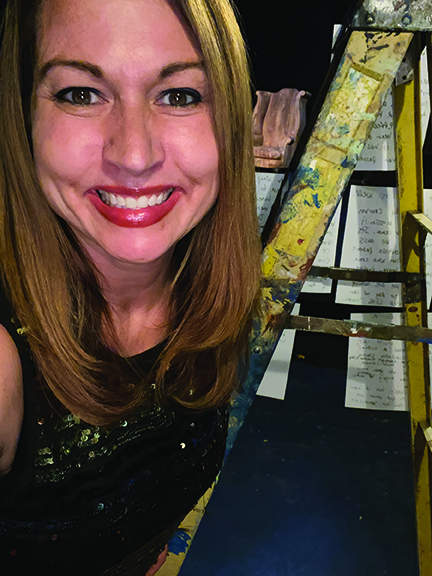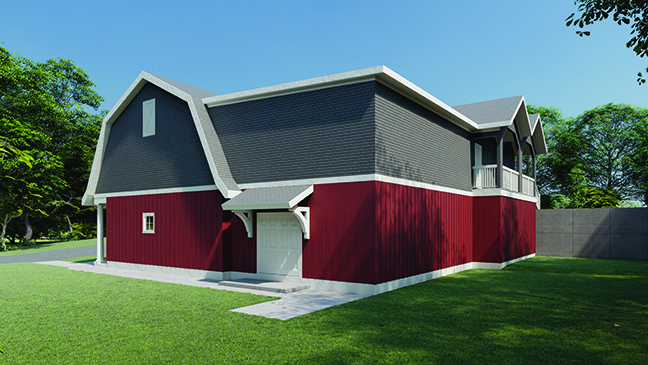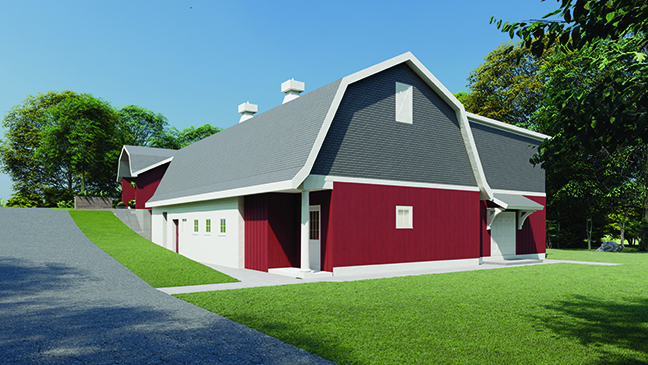 In the movie Babes In Arms, Mickey Rooney famously says, “Let’s put on a show!” For nearly sixty years, The Ridgefield Theater Barn has done just that. The building is undergoing a renovation that will expand their space and offerings which will allow them to continue their mission of providing a safe space for actors to explore and hone their craft, bringing live performances to the 068 area.
In the movie Babes In Arms, Mickey Rooney famously says, “Let’s put on a show!” For nearly sixty years, The Ridgefield Theater Barn has done just that. The building is undergoing a renovation that will expand their space and offerings which will allow them to continue their mission of providing a safe space for actors to explore and hone their craft, bringing live performances to the 068 area.
Theater troupes have a long history in Ridgefield. As far back as the late 1800’s, groups of actors would gather to put on performances in Town Hall or the old high school. Interest in theater productions grew and in 1965, the Ridgefield Workshop for the Performing Arts was incorporated. A few years later, they moved into one of the buildings on the Holy Ghost Novitiate property on Prospect Ridge and adopted an appropriate nickname: The Ridgefield Theater Barn. The building had been a working barn, complete with stables that had to be mucked out to be transformed into actors’ dressing rooms and a performance space in what was the hayloft, complete with the original barn doors.
Over the years, the Barn has undergone both structural and programming renovations. “There are so many theaters in Connecticut, so we needed to differentiate ourselves,” says Pamme Jones, Ridgefield Theater Barn’s Executive Director. The theater’s signature feature came about by chance. In 1991, during the production of Smorgasbord, they brought in tables and chairs so the audience could enjoy a meal while watching a show about food. It was so popular, they never went back to regular theater seating. “We have people who bring tablecloths, flowers and a fancy meal and those who simply share a bottle of wine with cheese and crackers,” says Jones. While there have been other dinner theaters in the area, none have the same intimate space that the Barn offers. Given its size, the audience experiences a more personal exchange with the performers.
In time, innovative programming, such as the Cabaret Series, Piano Bar, Improv troupes, and One-Act plays, were established. “When we made those changes and we were able to produce a full season and children’s program without running over budget, we asked ourselves, what could this place become?” says Jones.
The idea for expansion was conceived in 2015, but it took a pandemic to jump start the process. In March of 2020, when the world effectively shut down, Jones began a series called the Ghost Light Sessions. She would sit on an empty stage, illuminated by a single back light, and live stream a dialogue. At first, her conversations were factual: where to find toilet paper and other supplies. Eventually, they became an outlet to share fears, frustrations, and hope. RTB Ghost Light Sessions started receiving attention from radio stations, newspapers, and magazines. With public interest growing, Jones and the Board of Directors decided to launch their capital campaign then. An anonymous patron stepped up and offered a substantial donation to get things started. “He knew what we were about and wanted to make a legacy donation to support us,” says Jones. From there financial backing continued to come in – at the town, state and federal level. “I love that our funding is coming from all those outlets – that’s all the community,” says Jones.
The renovation will be a 60% expansion over the current building. The performance area, which seats 75 people, will not change. “It’s too historically important” says Jones. The two-story L-shaped addition will include backstage wing space, which will allow for a band offstage and safer, roomier exit and entrances for the actors. An elevator will be installed, making the stage accessible to anyone.
Room for everyone

 Space at RTB has always been a hindrance. “As it is now, we have to empty out the theater and shut down while we build sets for a new show,” says Jones. That can result in upwards of five weeks of lost revenue. The building renovation includes the addition of a workshop where sets can be built for future productions while the current one is still running. It also means that other programming, such as the children’s workshops, don’t have to be put on hold.
Space at RTB has always been a hindrance. “As it is now, we have to empty out the theater and shut down while we build sets for a new show,” says Jones. That can result in upwards of five weeks of lost revenue. The building renovation includes the addition of a workshop where sets can be built for future productions while the current one is still running. It also means that other programming, such as the children’s workshops, don’t have to be put on hold.
Also on the main floor, the lobby will be redone with an increase in bathroom facilities and a new concession stand designed by Ursula Hanavan of Interiors and Designs by Ursula.
The lower level will have two classrooms, one solely dedicated to the children’s program and the other will be available for community members to utilize. Jones is most excited about the Black Box performance space – a totally blank, square, black room that will have lights, sound, but no set stage. “It will be a flexible space that can be used for a lot of different purposes,” says Jones. RTB is planning on having poetry slams with Barb Jennes, a storytelling workshop by Moth Radio Hour producer Bonnie Levison, and even stand-up
comedy classes.
Jones hopes the renovation will be complete by the end of March and plans on reopening with the collaborative production: An Evening of One-Acts. “The spirit and contributions of countless like-minded artists and leaders have made this renovation possible,” she says. “I cannot wait to welcome our alumni and the community into this new space and get started on the future.” •